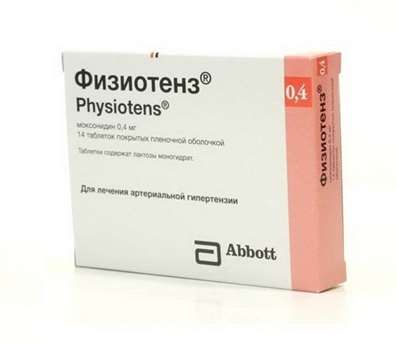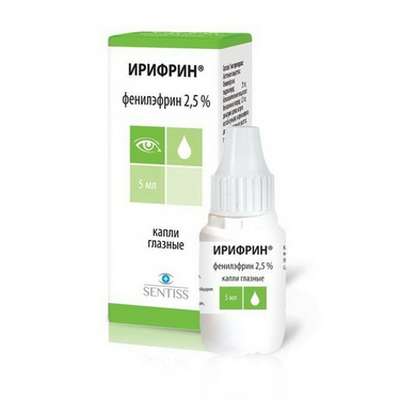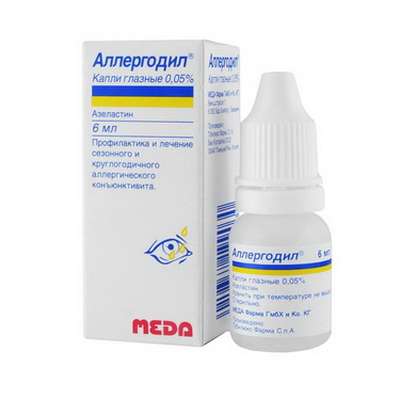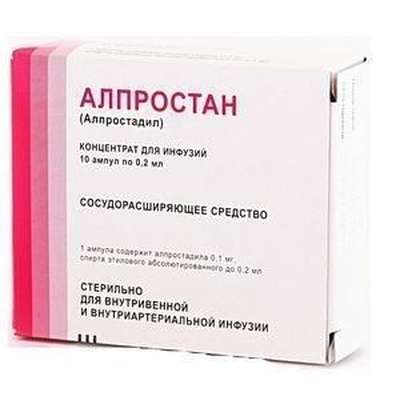Instruction for use: Zalasta
I want this, give me price
Dosage form: tablets
Active substance: Olanzapine*
ATX
N05AH03 Olanzapine
Pharmacological group:
Neuroleptics
The nosological classification (ICD-10)
F20 Schizophrenia: Schizophrenic conditions; Exacerbation of schizophrenia; Schizophrenia; Chronic schizophrenia; Dementia praecox; Bleuler's disease; Psychotic discordant; Dementia early; The febrile form of schizophrenia; Chronic schizophrenic disorder; Psychosis of the schizophrenic type; Acute form of schizophrenia; Acute schizophrenic disorder; Cerebral Organic Insufficiency in Schizophrenia; Acute attack of schizophrenia; Schizophrenic psychosis; Acute schizophrenia; Sluggish schizophrenia; Sluggish schizophrenia with apathoabulic disorders; Acute stage of schizophrenia with excitation
F30 Manic episode: Manic-depressive disorder; Manic agitation; Manic state; Manic conditions; A manic condition; Manic syndrome; Acute manic syndrome
F31 Bipolar affective disorder: Mood disorders bipolar; Affective bipolar psychosis; Manic-melancholic psychosis; Intermittent psychosis; Circular psychosis; Cyclophrenia; Bipolar disorders; Bipolar psychosis; Affective insanity; Manic-depressive syndrome; Psycho Manic-Depressive; Depressive episode of bipolar disorder
F31.1 Bipolar affective disorder, current episode of mania without psychotic symptoms: Mania in bipolar disorders
F31.2 Bipolar affective disorder, current episode of mania with psychotic symptoms: Manic episode of bipolar disorder; Mania in bipolar disorders
F32 Depressive episode: Adynamic subdepression; Astheno-adynamic subdepressive states; Asthenodepressive disorder; Astheno-depressive disorder; Asthenodepressive state; Astheno-depressive state; Major Depressive Disorder; Vyaloapatichesky depression with retardation; Double depression; Depressive pseudodement; Depressive illness; Depressive mood disorder; Depressive disorder; Depressive mood disorder; Depressive state; Depressive disorders; Depressive syndrome; Depressive syndrome larviated; Depressive syndrome with psychoses; Depressed masks; Depression; Depression Depletion; Depression with the phenomena of inhibition within the framework of cyclothymia; Depression is smiling; Involutional depression; Involutionary melancholy; Involutional depression; Manic-depressive disorder; Masked Depression; Melancholic Attack; Neurotic depression; Neurotic depression; Shallow Depression; Organic depression; Organic depressive syndrome; Simple depression; Simple melancholic syndrome; Psychogenic depression; Reactive depression; Reactive depression with moderate psychopathological symptoms; Reactive depressive states; Reactive depression; Recurrent depression; Seasonal depressive syndrome; Severostatic depression; Senile Depression; Senile Depression; Symptomatic Depression; Somatogenic depression; Cyclotymic depression; Exogenous Depression; Endogenous depression; Endogenous Depressive Conditions; Endogenous Depression; Endogenous depressive syndrome
F33 Recurrent depressive disorder: Major depressive disorder; Secondary depression; Double depression; Depressive pseudodement; Depressive mood disorder; Depressive disorder; Depressive mood disorder; Depressive state; Depressive syndrome; Depressed masks; Depression; Depression is smiling; Involutional depression; Involutional depression; Masked Depression; Melancholic Attack; Reactive depression; Reactive depression with moderate psychopathological symptoms; Reactive depressive states; Exogenous Depression; Endogenous depression; Endogenous Depressive Conditions; Endogenous Depression; Endogenous depressive syndrome
Composition
Tablets 1 table.
active substance:
olanzapine 2.5 mg; 5 mg; 7.5 mg; 10 mg; 15 mg; 20 mg
excipients: cellactose (spray-dried compound consisting of 75% alpha-lactose monohydrate and 25% cellulose powder) - 56.75 (113.5 / 170.25 / 340.5 / 454 mg; pregelatinized starch - 7.5 / 15 / 22.5 / 30/45/60 mg; corn starch - 2.25 / 4.5 / 6.75 / 9 / 13.5 / 18 mg; silicon dioxide colloidal anhydrous - 0.25 / 0.5 / 0.75 / 1 / 1.5 / 2 mg; magnesium stearate - 0.75 / 1.5 / 2.25 / 3 / 4.5 / 6 mg
Description of dosage form
Tablets of 2.5 mg: round, slightly biconvex, light yellow in color. Allowed blotches of a darker shade.
Tablets 5 mg: round, slightly biconcave, pale yellow with the inscription "5". Allowed blotches of a darker shade.
Tablets 7.5 mg: round slightly biconvex, pale yellow with the inscription "7.5". Allowed blotches of a darker shade.
Tablets 10 mg: round slightly biconvex, pale yellow with the inscription "10". Allowed blotches of a darker shade.
Tablets 15 mg: round slightly biconvex, pale yellow with the inscription "15". Allowed blotches of a darker shade.
Tablets of 20 mg: round slightly biconvex, pale yellow with the inscription "20". Allowed blotches of a darker shade.
Pharmachologic effect
Pharmacological action - antipsychotic, neuroleptic.
Pharmacodynamics
Olanzapine is an antipsychotic agent (neuroleptic) with a broad pharmacological spectrum of action. The antipsychotic effect is due to blockade of dopamine D2 receptors of the mesolimbic and mesocortical system; sedative effect - adrenoreceptor blockade of the reticular formation of the brainstem; antiemetic effect - blockade of dopamine D2 receptors in the trigger zone of the vomiting center; hypothermic action - blockade of dopamine receptors of the hypothalamus. In addition, it affects muscarinic, adrenergic, H1-histamine and some subclasses of serotonin receptors.
Olanzapine significantly reduces productive (delusions, hallucinations) and negative (hostility, suspicion, emotional and social autism) symptomatology of psychoses. Rarely causes extrapyramidal disorders.
Pharmacokinetics
Absorption of olanzapine is high, does not depend on food intake; Tmax after oral administration - 5-8 h.
Binding to proteins - 93% in the concentration range from 7 to 1000 ng / ml. Olanzapine binds, mainly, with albumin and α1-glycoprotein. Penetrates through gistogematicheskie barriers, incl. GEB.
Metabolized in the liver, active metabolites are not formed, the main circulating metabolite - glucuronide - does not penetrate the GEB.
Smoking, sex and age affect T1 / 2 and plasma clearance. In people older than 65 years, T1 / 2 is 51.8 hours and a plasma clearance of 17.5 l / h; in persons younger than 65 years - 33.8 h and plasma clearance - 18.2 l / h.
Plasma clearance is lower in patients with hepatic insufficiency, women and non-smokers compared to the corresponding groups of individuals. However, the extent of influence of age, sex or smoking on clearance and T1 / 2 olanzapine is negligible compared to the individual variability of pharmacokinetics between individuals. It is excreted mainly by kidneys (60%) in the form of metabolites.
Indications of the Zalasta
schizophrenia (treatment);
Zalasta® effectively supports the improvement of clinical symptoms in long-term treatment in patients with initial positive reactions to the drug.
moderate or severe episodes of mania (treatment);
prevention of mania recurrence in bipolar disorder in patients with manic episodes with a good effect of olanzapine therapy.
Contraindications
increased sensitivity to olanzapine or other components of the drug;
angle-closure glaucoma;
rare hereditary problems of galactose intolerance, deficiency of Lappa lactase or impaired absorption of glucose-galactose;
lactation period;
children under 18 years of age (efficacy and safety not established).
With caution: renal insufficiency, hepatic insufficiency, prostatic hyperplasia, paralytic intestinal obstruction, epilepsy, history of convulsive syndrome, leukopenia and / or neutropenia of various genesis, myelosuppression of various genesis, incl. myeloproliferative diseases, hypereosinophilic syndrome, cardiovascular and cerebrovascular diseases or other conditions predisposing to arterial hypotension, congenital increase of the QT interval on the ECG (increase of the QT interval corrected on the ECG), or in the presence of conditions potentially capable of causing an increase in the QT interval (for example simultaneous administration of drugs that extend the QT interval, congestive heart failure, hypokalemia, hypomagnesemia), advanced age, and simultaneous administration rugih centrally acting drugs; immobilization, pregnancy.
Application in pregnancy and lactation
Due to the limited experience of using the drug in pregnancy, olanzapine should be used only if the expected benefit for the mother justifies the potential risk to the fetus. Women should be informed of the need to inform the doctor about the onset or planned pregnancy with olanzapine therapy. There are isolated reports of tremors, arterial hypertension, lethargy and drowsiness in children born to mothers who took olanzapine in the third trimester of pregnancy.
The study found that olanzapine is excreted in breast milk. The average dosage (mg / kg) received by a child when the mother's equilibrium concentration reached equilibrium was 1.8% of the mother's olanzapine dose (mg / kg). It is not recommended to breast-feed on the background of olanzapine therapy.
Side effects
Classification of the incidence of adverse events (WHO): very often - ≥1 / 10; often from ≥1 / 100 to <1/10; infrequently - from ≥1 / 1000 to <1/100; rarely - from ≥1 / 10000 to <1/1000; very rarely - <1/10000, including individual messages.
From the side of the central nervous system and peripheral nervous system: very often - drowsiness; often - dizziness, akathisia, parkinsonism, dyskinesia; rarely - convulsive syndrome (more often in the background of convulsive syndrome in anamnesis); very rarely - malignant neuroleptic syndrome (see section "Special instructions"), dystonia (including oculogic crisis) and tardive dyskinesia. With a sharp abolition of olanzapine, symptoms such as sweating, insomnia, tremor, anxiety, nausea, or vomiting are very rarely noted.
From the CVS: often - arterial hypotension (including orthostatic); infrequently - a bradycardia with a collapse or without; very rarely - an increase in the QTc interval on the ECG (see section "Special instructions"), ventricular tachycardia / fibrillation and sudden death (see section "Special instructions"), thromboembolism (including pulmonary artery embolism and deep vein thrombosis).
From the gastrointestinal tract: often - transitory anticholinergic effects, incl. constipation and dry mouth; very rarely - pancreatitis.
Disorders of metabolism and diet: very often - weight gain; often - increased appetite; very rarely hyperglycemia and / or decompensation of diabetes mellitus, sometimes manifested by ketoacidosis or coma, including fatal outcome; hypertriglyceridemia, hypercholesterolemia, hypothermia.
Hepatobiliary disorders: often - transient, asymptomatic increase in the level of hepatic transaminases (ALT, ACT), especially at the beginning of treatment (see "Special instructions"); rarely - hepatitis (including hepatocellular, cholestatic or mixed liver damage).
On the part of the organs of hematopoiesis and lymphatic system: often - eosinophilia; rarely - leukopenia; very rarely - thrombocytopenia, neutropenia.
On the part of the organs of the musculoskeletal system: very rarely - rhabdomyolysis.
From the organs of the genitourinary system: very rarely - urinary retention, priapism.
From the skin and subcutaneous tissue: infrequently - the reaction of photosensitization.
Allergic reactions: rarely - skin rash; very rarely - anaphylactoid reactions, angioedema, skin itching or urticaria.
Other: often - asthenia, peripheral edema; very rarely - alopecia.
Laboratory parameters: very often hyperprolactinemia, but clinical manifestations (eg gynecomastia, galactorrhea and breast enlargement) are rare. In most patients, the level of prolactin was spontaneously normalized without the abolition of therapy; infrequently - increase in the level of creatine phosphokinase (CK); very rarely - an increase in the level of alkaline phosphatase and total bilirubin.
In elderly patients with dementia, a large incidence of deaths and cerebrovascular disorders (stroke, transient ischemic attacks) has been reported in studies. Very frequent in this category of patients were violations of gait and fall. Also often observed pneumonia, fever, lethargy, erythema, visual hallucinations and urinary incontinence.
Among patients with drug (against the background of dopamine agonists) psychoses on the background of Parkinson's disease often recorded worsening of parkinsonian symptoms and the development of hallucinations.
There are data on the development of neutropenia (4.1%) against a combination therapy with valproic acid in patients with bipolar mania. Simultaneous therapy with valproic acid or lithium helps to increase the frequency (> 10%) of tremors, dry mouth, increase appetite and weight gain. Violations of speech were often recorded (from 1 to 10%). In the first 6 weeks of combined therapy with lithium, the incidence of weight gain increases. Long-term therapy with olanzapine (up to 12 months) in order to prevent relapses in patients with bipolar disorder was accompanied by an increase in body weight.
Interaction
Potential drug interactions that affect olanzapine metabolism: olanzapine is metabolized by the enzyme CYP1A2, so inhibitors or inducers of cytochrome P450 isoenzymes that exhibit specific activity against CYP1A2 may affect the pharmacokinetic parameters of olanzapine.
Inductors CYP1A2: clearance of olanzapine may be increased in smoking patients or with simultaneous reception of carbamazepine, which leads to a decrease in the concentration of olanzapine in the blood plasma. Clinical observation is recommended. some cases require an increase in the dose of the drug.
CYP1A2 inhibitors: fluvoxamine - a specific inhibitor of CYP1A2 - significantly reduces the clearance of olanzapine. The average increase in Cmax of olanzapine after the administration of fluvoxamine in non-smokers was 54%, and for men who smoke, 77%. The average increase in olanzapine AUC in these categories of patients was 5 and 108%, respectively. In patients taking fluvoxamine or any other inhibitor of CYP1A2 (eg ciprofloxacin), olanzapine therapy should be started with smaller doses. A decrease in the dose of olanzapine may also be required if CYP1A2 inhibitors are added to therapy.
Drug interactions affecting / not affecting the bioavailability of olanzapine. Activated charcoal reduces the absorption of olanzapine by oral intake by 50-60%, so it should be taken at least 2 hours before or after taking olanzapine.
Fluoxetine (CYP450 inhibitor), a single dose of magnesium or aluminum-containing antacids or cimetidine does not affect the pharmacokinetics of olanzapine.
Potential ability of olanzapine to influence other medicines. Olanzapine may reduce the effects of direct and indirect dopamine agonists.
Under conditions in vitro, olanzapine does not suppress the basic isoenzymes of CYP450 (eg 1A2, 2D6, 2C9, 2C19, ZA4). In vivo, there was no inhibition of the metabolism of the following active substances: tricyclic antidepressants (CYP2D6), warfarin (CYP2C9), theophylline (CYP1A2), and diazepam (CYP3A4 and 2C19).
No interaction was detected when used simultaneously with lithium or biperidene. Therapeutic monitoring of valproic acid in plasma showed that with the simultaneous administration of olanzapine, valproic acid dosage changes are not required (see "Side effects" section).
Care should be taken when using other central-action drugs at the same time. Despite the fact that a single dose of alcohol (45 mg / 70 kg) does not have a pharmacokinetic effect, alcohol intake together with olanzapine may be accompanied by an increase in depressive effect on the central nervous system.
Dosing and Administration
Inside, 1 time per day, regardless of food intake. In case of cancellation, a gradual dose reduction is recommended.
Schizophrenia: the recommended initial dose of the drug is 10 mg / day.
Episode mania: the initial dose is 15 mg in one dose - with monotherapy or 10 mg / day - as part of a combination therapy.
Prophylaxis of relapses in bipolar disorder: the recommended initial dose of the drug in the state of remission is 10 mg / day. For patients already receiving Zalast ® for the treatment of manic episodes, maintenance therapy is administered in the same doses. If a new manic, mixed or depressive episode develops with Zalast®, if necessary, increase the dose of the drug with additional treatment for mood disorders, according to clinical indications.
The daily dose of the drug in the treatment of schizophrenia, a manic episode or the prevention of recurrence of bipolar disorder can be 5-20 mg / day, depending on the clinical condition of the patient. An increase in the dose above the recommended initial dose is only possible after an adequate repeated clinical assessment of the patient's condition and is usually performed at intervals of at least 24 hours.
Special patient groups
In elderly patients, a reduction in the initial dose (up to 5 mg / day) is usually not recommended, but it is possible in patients older than 65 years with risk factors (see section "Special instructions").
Patients with liver and / or kidney disease are recommended to reduce the initial dose to 5 mg / day. At moderate hepatic impairment (cirrhosis, class A or B classification Child-Pugh hepatocellular insufficiency in patients with cirrhosis of the liver), the initial dose is 5 mg / day, may further increase the dose with caution.
Women do not need a change in dosing compared to men.
In non-smoking patients, dose adjustment compared to smoking patients (see section "Interaction") is not required.
If the patient has more than one factor that can influence the absorption of the drug (female, elderly, non-smokers), it may be necessary to reduce the initial dose. If necessary, further increase in dose with caution.
Overdose
Symptoms: very often (> 10%) - tachycardia, agitation / aggression, dysarthria, various extrapyramidal symptoms, decreased level of consciousness from inhibition to coma; less than 2% of the cases - delirium, seizures, coma, neuroleptic malignant syndrome (NMS), respiratory depression, aspiration, increase or decrease in blood pressure, cardiac arrhythmia; in very rare cases - cardiopulmonary insufficiency. The minimum dose of olanzapine for acute overdose with a lethal outcome is 450 mg, the maximum dose was recorded for an overdose with a favorable outcome (survival) of 1500 mg.
Treatment: gastric lavage, administration of activated charcoal (olanzapine reduced bioavailability by 60%), symptomatic treatment under the control of vital functions, including the treatment of hypotension and vascular collapse, the maintenance of respiratory function. There is no specific antidote. It is not recommended to induce vomiting, to use epinephrine, dopamine or other sympathomimetics with beta-adrenergic activity, the latter can aggravate arterial hypotension. To identify possible arrhythmias, monitoring of cardiovascular activity is necessary. The patient should be under continuous medical supervision until complete recovery.
Special instructions
There are very rare reports of the development of hyperglycemia and / or decompensation of diabetes mellitus, sometimes accompanied by the development of ketoacidosis or ketoacidotic coma, incl. there are reports of several fatal cases. In some cases, there was a previous decompensation of weight gain, which could become a predisposing factor. In patients with diabetes mellitus and risk factors for the development of this disease, regular clinical monitoring and monitoring of blood glucose levels are recommended.
When the level of lipids changes, correction of therapy is required.
With a sharp discontinuation of olanzapine, it is very rare (less than 0.01%) to develop the following symptoms: sweating, insomnia, tremor, anxiety, nausea, or vomiting. With the withdrawal of the drug, a gradual dose reduction is recommended.
Anticholinergic activity. Since clinical experience with olanzapine in people with concomitant diseases is limited, the drug should be used with caution in patients with prostatic hyperplasia, paralytic intestinal obstruction.
Experience with olanzapine in patients with psychosis in Parkinson's disease caused by dopaminomimetic treatment. Olanzapine is not recommended for the treatment of psychoses in Parkinson's disease caused by dopaminomimetic treatment. The symptoms of parkinsonism and hallucinations increase. However, olanzapine was not superior to placebo in the treatment of psychoses.
Olanzapine is not indicated for the treatment of psychoses and / or behavioral disorders in dementia due to increased mortality and increased risk of cerebrovascular disorders (stroke, transient ischemic attacks). The increase in mortality does not depend on the dose of olanzapine or the duration of therapy. Risk factors predisposing to increased mortality include: age over 65 years, dysphagia, sedation, malnutrition and dehydration, lung diseases (eg pneumonia, including aspiration), simultaneous reception of benzodiazepines. However, the increased incidence of death in olanzapine compared with placebo did not depend on these risk factors.
With antipsychotic therapy, the improvement in the clinical state of the patient occurs in the period from several days to several weeks. During this period, the patient needs careful observation.
Dysfunction of the liver. At the beginning of therapy, an asymptomatic increase in liver transaminases (ALT and ACT) is possible. In patients with initially elevated levels of ACT and / or ALT, hepatic insufficiency and conditions potentially limiting the functionality of the liver, as well as those taking hepatotoxic drugs, caution should be exercised in prescribing olanzapine. When ALT and / or ACT are increased against the background of drug therapy, it is recommended that medical supervision of the patient and, possibly, a reduction in the dose of the drug be recommended. When diagnosing hepatitis (including hepatocellular, cholestatic or mixed), olanzapine should be discarded.
Hematologic changes. The drug should be used with caution in patients with leukopenia and / or neutropenia of any origin, myelosuppression of drug origin, as well as radiation or chemotherapy, due to concomitant diseases, in patients with hypereosinophilic conditions or myeloproliferative diseases. Neutropenia has often been observed with the simultaneous use of olanzapine and valproic acid (see "Side effects").
Malignant neuroleptic syndrome. Potentially life-threatening condition associated with antipsychotic medication (neuroleptics), incl. olanzapine. Characterized by the following clinical manifestations: fever, muscle rigidity, impaired consciousness, autonomic disorders (unstable pulse or labile blood pressure, tachycardia, increased sweating, arrhythmias). Additional symptoms of ZNS: increased CK, myoglobinuria (against rhabdomyolysis) and acute renal failure. With the development of symptoms of the ZNS, as well as an increase in body temperature for no apparent reason, it is necessary to cancel all neuroleptics, including. olanzapine.
Convulsive syndrome. Olanzapine should be carefully prescribed to patients with a history of seizures or the presence of factors that reduce the threshold of convulsive readiness. On the background of taking olanzapine, seizures were rarely recorded.
Late dyskinesia. Therapy with olanzapine was accompanied by a significantly lower incidence of development of tardive dyskinesia in comparison with haloperidol. The risk of developing tardive dyskinesia increases with increasing duration of treatment. If there are signs of this condition, the patient taking olanzapine should cancel the drug or reduce its dose. Symptoms of dyskinesia may temporarily increase after the drug is discontinued.
General activity in relation to the central nervous system. Care should be taken when using other drugs of central action and alcohol.
Cerebrovascular adverse events, including stroke in elderly patients with dementia. In elderly people, postural arterial hypotension is not often observed. Patients over 65 years of age are recommended to periodically monitor blood pressure. Olanzapine should be administered with caution to patients with an established QTc interval, especially the elderly, with congenital long QT syndrome, congestive heart failure, myocardial hypertrophy, hypokalemia, and hypomagnesemia.
When taking olanzapine very rarely (less than 0.01%) recorded cases of development of venous thromboembolism. The causal relationship between olanzapine therapy and vein thrombosis has not been established. Since patients with schizophrenia often have acquired risk factors for venous thrombosis, all possible other factors (eg, immobilization) should be identified and preventive measures taken. Zalasta® tablets contain lactose. The drug should not be taken to patients with rare hereditary problems of galactose intolerance, Lappease lactase deficiency or impaired glucose-galactose absorption.
Influence on the ability to drive a car or perform work that requires an increased speed of physical and mental reactions. During the treatment period, care must be taken when driving vehicles and engaging in other potentially hazardous activities that require increased concentration and speed of psychomotor reactions.
Release form
Tablets, 2.5 mg, 5 mg, 7.5 mg, 10 mg, 15 mg and 20 mg. By 7 tab. in the blister pack. For 4 or 8 blisters packaged in a cardboard box.
Conditions of leave from pharmacies
On prescription.
Storage conditions of the drug Zalasta
At a temperature of no higher than 25 ° C.
Keep out of the reach of children.
Shelf life of the drug Zalasta
5 years.
Do not use after the expiry date printed on the package.

 Cart
Cart





